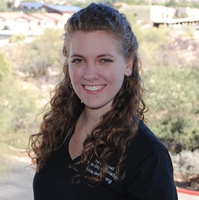Report
by Ameé Hennig
“The sweetest thing in all my life has been the longing…to find the place where all the beauty came from.”
This quotation from C.S. Lewis’ novel Till We Have Faces is one of my favorites and most accurately defines how I feel about IDA’s International Dark Sky Places Program.
Across the globe we can see many areas blanketed, shrouded in light. In fact, we call them sky, or light, globes when they are seen from a distance. Out, beyond those walls of light there are places of simple beauty. The purity of isolated sky and people working hard to make a difference, this is what the International Dark-Sky Association’s IDSPlaces program works to find.
Currently, there are five International Dark Sky Reserves, eleven Parks, and four Communities. Each worked months and even years to make changes in their lighting and to gather together the information necessary to show to the world why they deserve the designation of a Dark Sky Place.
For the reserve designation the land included in the application must be massive—at least 170,000 acres. At the heart of the reserve is a core area, protected by a buffer zone. Homes and even communities may be enclosed on these lands looking to protect their dark night skies.
The park may be smaller but must, like the reserve, focus on a dark night sky through retrofits of lighting, education, the development of a lightscape management plan, and many other requirements.
The community may not have the best skies of all. In fact, one community lies right next door to one of the most light polluted cities in the world. However, the people there have a spirit driving them to protect what they do have. At the same time, they inspire and motivate people in the surrounding areas and across the globe to make positive changes. This drive shows through the designated communities and should be an inspiration to everyone who lives in a place where they have never seen the Milky Way.
Even though I could write pages on the amazing things that each location offers, instead I will share a few pictures from some of these places (find the rest on our website) and let you make up your own mind about where the beauty came from.
Big Bend National Park by Goldpaint Photography
Lewis’ full quotation reads, “The sweetest thing in all my life has been the longing—to reach the Mountain, to find the place where all the beauty came from—my country, the place where I ought to have been born. Do you think it all meant nothing, all the longing? The longing for home? For indeed it now feels not like going, but like going back.”
Natural Bridges National Monument by Wally Pacholka.
My proposal, as you go on with your day, is after seeing these images to think of what defines ‘the Mountain’ for you. For me, it is the night sky. You see; the atoms that compose our bodies, the ground we walk on, and all that surrounds us are ultimately particles from the ejections of dying stars. All the beauty literally came from the stars. The ‘going back’ for me is the constant walk towards a better understanding of how we can live together with this world we have been blessed with while seeing it and ourselves flourish.
These places and people exist in our world. All that is left to do is protect what we have and support the ‘going back’ of those that we have lost.
Learn more about these Dark Sky Places and how to help a location become one by visiting IDSPlaces.
A video by Alex Cherney.
 Amee Hennig is a writer & program manager at the International Dark-Sky Association. She works with parks, reserves, communities, and people around the world to promote dark sky awareness and add to the International Dark Sky Places. Amee graduated from the University of Arkansas with a B.S. in physics and English, creative writing. While in college Ameé did research at the University of Arkansas, McDonald Observatory in West Texas, Cerro Tololo Inter-American Observatory in Chile, and also worked as an astronomy education intern at the Smithsonian National Air and Space Museum. Follow her on Twitter @AstropoetAmee and Facebook and visit her blog.
Amee Hennig is a writer & program manager at the International Dark-Sky Association. She works with parks, reserves, communities, and people around the world to promote dark sky awareness and add to the International Dark Sky Places. Amee graduated from the University of Arkansas with a B.S. in physics and English, creative writing. While in college Ameé did research at the University of Arkansas, McDonald Observatory in West Texas, Cerro Tololo Inter-American Observatory in Chile, and also worked as an astronomy education intern at the Smithsonian National Air and Space Museum. Follow her on Twitter @AstropoetAmee and Facebook and visit her blog.










Comments